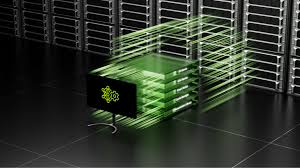In 2025, the creative and tech industries are closer than ever. The demand for real-time rendering, AI-powered editing tools, and ultra-high-resolution workflows has forced video editors and 3D artists to look beyond traditional computing setups. The solution? GPU-powered servers—a tool once reserved for high-performance computing and now reshaping creative production.
Interestingly, many of the same machines that power complex computations like AI model deployment are now being adopted by media professionals. But why would an artist need the same hardware used for training machine learning models?
Let’s explore why more creatives are moving to GPU servers, and why the best choice may surprisingly be a server for AI model deployment—even if your focus is visuals, not data science.
1. The GPU Advantage: Speed, Parallelism, and Efficiency
Traditional CPUs (central processing units) are great for handling general-purpose tasks. But when it comes to processing thousands of concurrent tasks—like rendering frames or simulating physics in 3D environments—CPUs fall short.
GPUs (graphics processing units), on the other hand, are built for parallelism. Their architecture makes them ideal for tasks such as:
- Real-time video encoding and decoding
- Ray tracing and lighting simulations in 3D modeling
- Multi-layer video editing with high-resolution assets
- Running AI-enhanced tools for upscaling, rotoscoping, and facial recognition
These GPU-driven workflows mirror the demands of AI model training and inference, which is why a server for AI model deployment is an excellent match for creators needing sheer processing power.
2. High-Resolution Demands Require High-Performance Infrastructure
With 4K, 6K, and even 8K content becoming more mainstream, the pressure on local machines has reached a boiling point. Modern creative suites like Adobe Premiere Pro, DaVinci Resolve, Blender, and Unreal Engine require:
- High memory bandwidth
- Large-scale storage throughput
- Low-latency processing for real-time previews
GPU servers offer just that. In fact, a server for AI model deployment often includes:
- Top-tier NVIDIA or AMD GPUs
- NVMe SSD storage arrays
- High-bandwidth RAM (128GB and above)
- Redundant systems for uninterrupted workloads
These capabilities aren’t just useful—they’re necessary for studios and freelancers alike who want to future-proof their production pipelines.
3. AI-Enhanced Editing Is the New Norm
AI has gone from a buzzword to a built-in feature. From Adobe’s Sensei to Topaz Video AI, neural networks are now assisting in:
- Smart object tracking
- Scene detection
- Auto color grading
- Upscaling from HD to 4K or even 8K
- Auto-removal of noise, grain, or unwanted elements
These functions are computationally intense. Running them locally can bring even high-end desktops to their knees. But with a server for AI model deployment, these AI tasks execute at scale and speed, turning hours of rendering into minutes.
4. Remote Workflows Need Centralized Power
The post-pandemic era has cemented remote work as the new normal—even in creative fields. Studios with distributed teams now rely on centralized, high-performance servers accessible through the cloud.
A GPU server allows:
- Remote access for collaborative editing or rendering
- Central storage and project syncing
- Integration with AI-based asset tagging and management systems
- Multiple users to work on the same server instance with virtual desktops
This type of setup is nearly identical to how AI researchers access a server for AI model deployment, making GPU servers a natural fit for hybrid creative teams.
5. Cost-Effective Scaling and Flexibility
Buying high-end GPUs locally (especially in bulk) can be expensive and unsustainable. On the other hand, renting or owning a GPU server gives creatives access to top-tier hardware at a fraction of the cost of constantly upgrading desktop rigs.
Many providers offer:
- Hourly, monthly, or custom usage plans
- Dedicated environments optimized for rendering or AI inference
- Support for multiple software environments (Linux, Windows, Docker)
In many cases, artists unknowingly rent a server for AI model deployment—because it’s the most affordable and powerful option available.
6. Real-Time Rendering and Virtual Production
Thanks to Unreal Engine and Unity, real-time rendering is now part of everything from virtual sets to cinematic previs. These environments demand GPUs capable of handling:
- Dynamic lighting and shading
- 3D particle effects
- Motion capture integration
- Instant feedback loops for creative decision-making
A low-latency, high-bandwidth GPU server handles this effortlessly—especially one originally designed to support AI model inference, where real-time performance is non-negotiable.
Conclusion: A Shared Future for Creatives and AI
In 2025, the gap between creative workflows and machine learning infrastructure is closing fast. Tools designed for AI model training and deployment are proving equally vital for creative industries that demand speed, flexibility, and precision.
Whether you’re rendering cinematic 3D scenes, editing hours of 8K footage, or using AI to enhance your creative process, a server for AI model deployment might just be the powerhouse your business needs.
As a video editor or 3D artist, adopting GPU-powered servers is no longer just an upgrade—it’s a strategic move to keep pace with the evolving demands of content creation.






